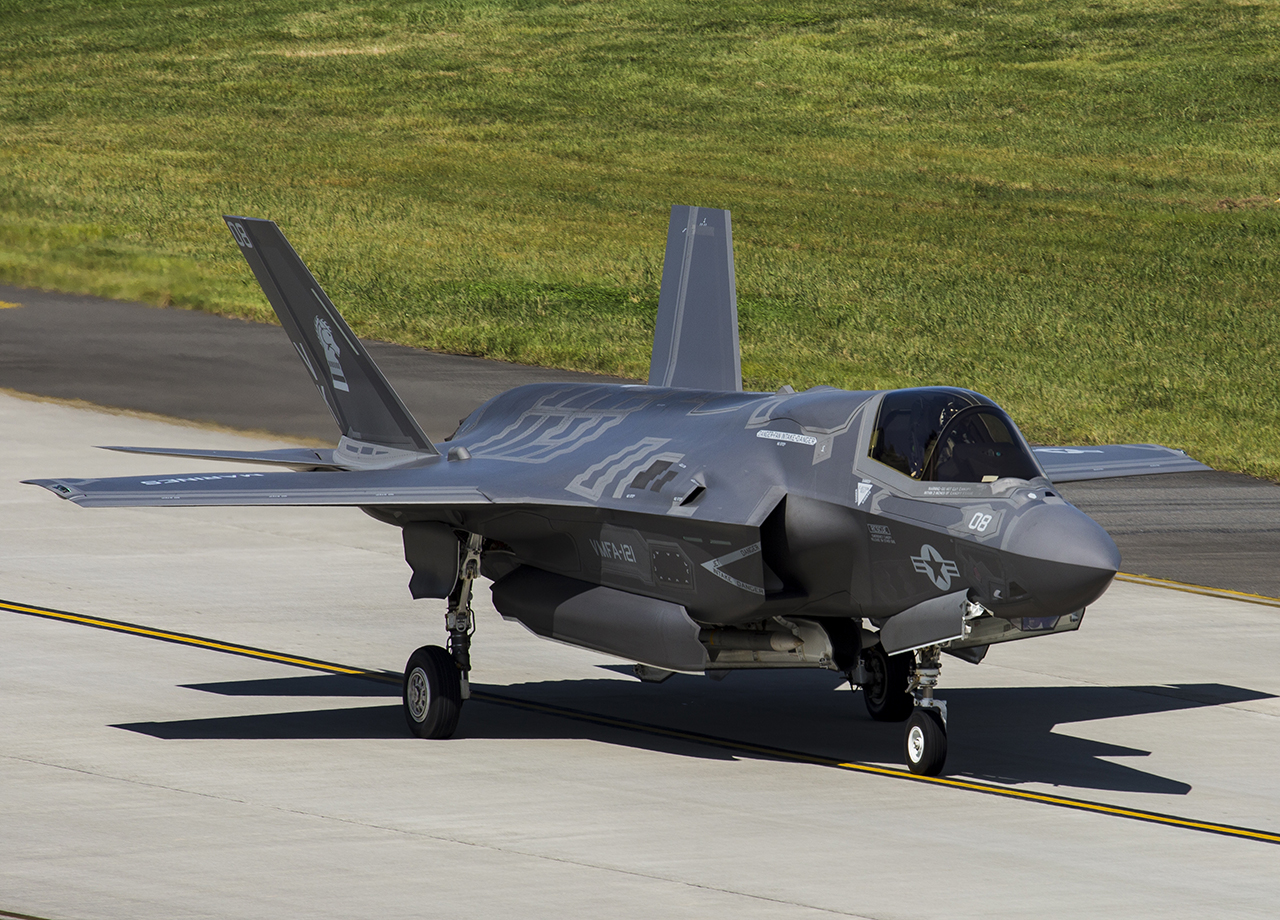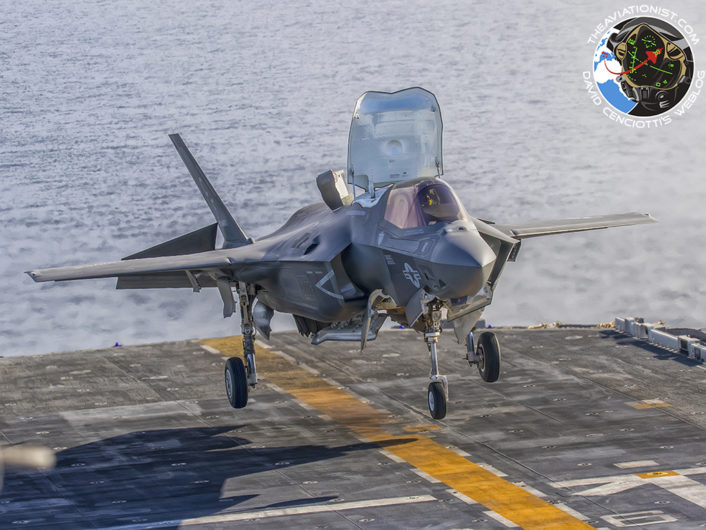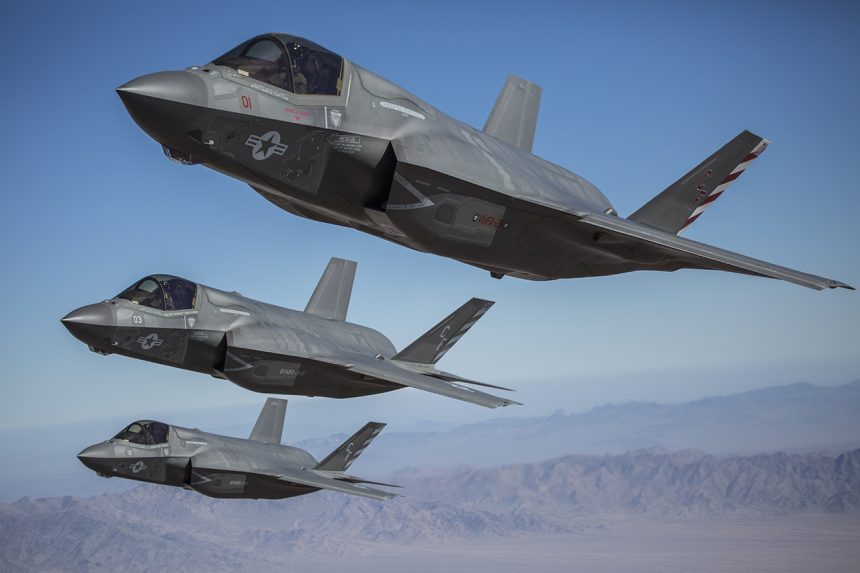The USMC may have their “baptism of fire” with the F-35B next year.
The F-35B, the STOVL (Short Take Off Vertical Landing) variant of the Lightning II 5th generation aircraft is expected to deploy to the Pacific and Central Command theaters in 2018, the Marine Corps Times reported.
According to he F-35B, that can operate from amphibious assault ships, “is expected to deploy with two Marine expeditionary units to the Pacific and Central Command theaters in the spring and summer. […] The first deployment will be with the 31st MEU aboard the amphibious assault ship USS Wasp and the second will be with the 13th MEU aboard the amphibious assault ship USS Essex, said spokeswoman Capt. Sarah Burns.”
The first deployment to the U.S. Central Command AOR (area of responsibility) – that includes Iraq, Syria, Iran, Yemen and Afghanistan – has long been anticipated. In 2016, Lt. Gen. Robert Walsh, head of Marine Corps Combat Development Command, told reporters that the service was planning to deploy the F-35B to the CENTCOM area of operations aboard the USS Essex (six more F-35Bs were to deploy to the Pacific aboard the USS Wasp).
The 2018 deployment follows the relocation of Marine Fighter Attack Squadron 121 (VMFA-121), an F-35B squadron with 3rd Marine Aircraft Wing to MCAS Iwakuni, Japan, from MCAS (Marine Corps Air Station) Yuma, Arizona, on Jan. 9, 2017. Since then, the F-35B have started operating in the region, taking part in local drills as well as some routine “shows of force” near the Korean Peninsula: for instance, on Aug. 30, four U.S. Marine Corps F-35B Lightning II joined two USAF B-1B Lancers from Guam onf a 10-hour mission that brought the “package” over waters near Kyushu, Japan, then across the Korean Peninsula. Interestingly, during that mission, the F-35Bs flew with the radar reflectors used to make LO (Low Observable) aircraft clearly visible on radars and also dropped their 1,000-lb GBU-32 JDAMs (Joint Direct Attack Munitions) on Pilsung firing range. On a subsequent mission on Sept. 18, the aircraft took part in a “sequenced bilateral show of force” over the Korean peninsula carrying “live” AIM-120 AMRAAM missiles in the internal weapons bays.

As already reported, the F-35s would be probably involved in the Phase 4 of an eventual pre-emptive air strike on Pyongyang, the phase during which tactical assets would be called to hunt road-mobile ballistic missiles and any other artillery target that North Korea could use to launch a retaliatory attack (even a nuclear one) against Seoul.
Moreover, during the opening stages of an air war, the F-35Bs would be able to act as real-time data coordinators able to correlate and disseminate information gathered from their on board sensors to other assets contributing to achieve the “Information Superiority” required to geo-locate the threats and target them effectively.
Considered that Marine aviation officials have said that up to half of the current F/A-18 Hornets are not ready for combat, the deployment to the CENTCOM AOR a key step in the long-term plan to replace the legacy F/A-18 Hornet, EA-6B Prowler, and AV-8B Harrier fleets with a total of 353 F-35Bs and 67 F-35Cs by 2032.

In October 2016, a contingent of 12 F-35Bs took part in Developmental Test III aboard USS America followed by the Lightning Carrier “Proof of Concept” demonstration on the carrier on Nov. 19, 2016. During the POC, the aircraft proved it can operate at-sea, employing a wide array of weapons loadouts with the newest software variant and some of the most experienced F-35B pilots said that “the platform is performing exceptionally.” The eventual participation in a real operation such as Operation Inherent Resolve (OIR) over Syria and Iraq, albeit rather symbolic, will also be the first opportunity to assess the capabilities of the platform in real combat. As for the Israeli F-35s, the airspace over the Middle East (or Central Asia) could be a test bed for validating the tactical procedures to be used by the new aircraft in the CAS (Close Air Support) mission with added Intelligence, Surveillance & Reconnaissance (ISR) and Command & Control (C2) capability.
If committed to support OIR, the F-35B will probably operate in a “first day of war” configuration carrying weapons internally to maintain low radar cross-section and observability from sensors playing both the “combat battlefield coordinators” role, collecting, managing and distributing intelligence data, and the “kinetic attack platform” role, dropping their ordnance on the targets and passing targeting data to older 4th Gen. aircraft via Link-16. More or less what done by the USMC F-35Bs during Red Flag 17-3 earlier in 2017; but next year it will be for the real thing.
Top image credit: U.S. Marine Corps photo by Lance Cpl. Becky Calhoun








